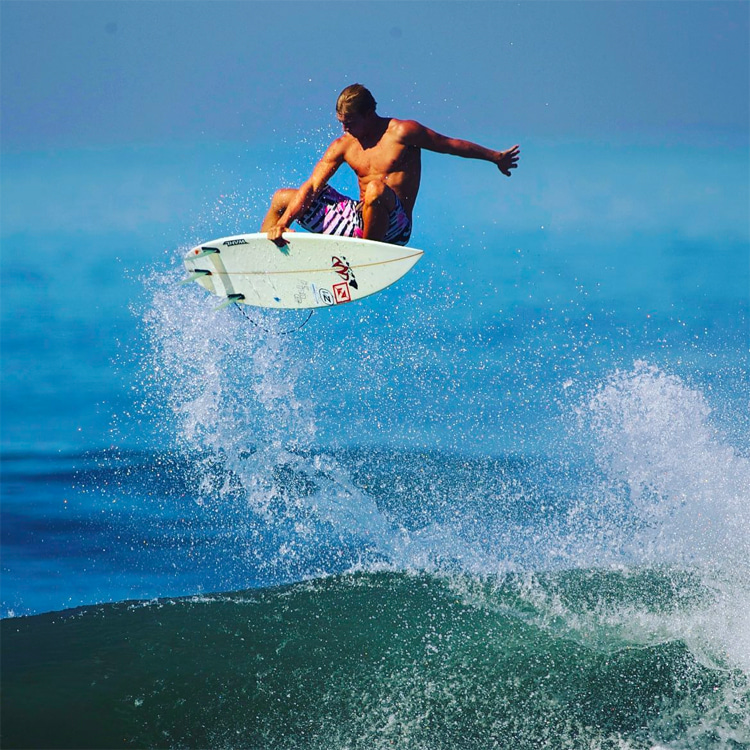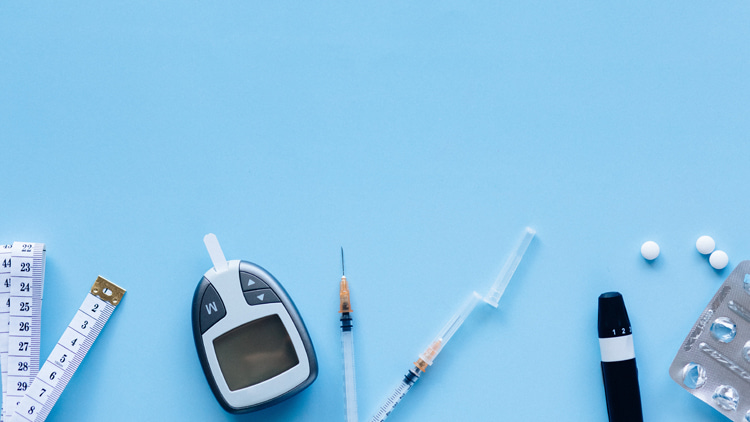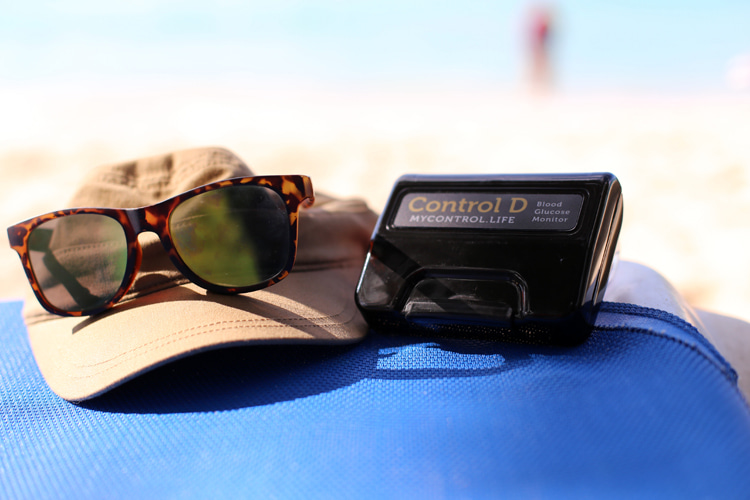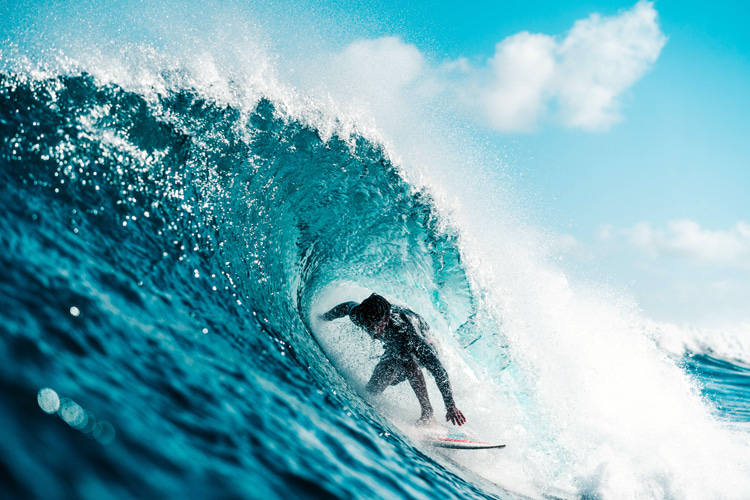Surfing with type 1 diabetes (T1D) seems like an intricate challenge. However, with the right preparation and mindset, it is not only possible but also immensely rewarding.
In 2019, according to the Centers for Disease Control and Prevention (CDCP), 28.7 million Americans of all ages - or 8.7% of the population - had been diagnosed with diabetes.
Among these, 283,000 children and adolescents and 1.6 million adults reported having T1D and using insulin.
Surfing takes place in the ocean and makes it harder to manage insulin levels. But there are ways to overcome it.
Type 1 Diabetes Explained
Type 1 diabetes occurs when the immune system mistakenly attacks the pancreas's beta cells that make insulin.
This hormone, insulin, aids our cells in taking in glucose from our blood, utilizing it for energy.
Without adequate insulin, excess glucose accumulates in the blood, resulting in elevated blood sugar.
Elevated blood sugar can manifest in various ways, from symptoms like feeling thirsty often and urinating frequently to more serious health complications such as damage to nerves, issues with kidneys, and cardiovascular problems.
The root cause of type 1 diabetes is still a mystery, but it's thought to arise from genetic factors and environmental triggers, potentially even certain viruses.
While type 2 diabetes (T2D) is commonly associated with lifestyle choices and tends to manifest in older adults, T1D is often detected in children or teenagers.
That said, it can also emerge later in life.
Managing type 1 diabetes requires a commitment to insulin treatment, either via injections or an insulin pump, coupled with consistent blood sugar checks and maintaining a balanced lifestyle.
Former pro surfer Scott Dunton was diagnosed with T1D at 16 but has managed to balance his passion and condition healthily ever since.
The California athlete has also been openly sharing type 1 diabetes knowledge with the surfing community so that more people can overcome the hurdle.

Why Surfing with T1D Can Be Challenging
Surfing, with its physical demands, can swiftly consume carbohydrates, potentially leading to alarming drops in blood sugar levels.
Moreover, the adrenaline rush, courtesy of this thrilling sport, can obscure the recognizable signs of hypoglycemia.
As if these weren't challenges enough, the added worry about insulin pumps and glucose monitors entering non-waterproof territories exists.
However, those with type 1 diabetes who've dared to take on the waves have figured out strategies to navigate these turbulent waters.
The Pre-Surf Preparation: Carb-Loading
To start with, there's the technique of carb-loading.
By consuming a carbohydrate-rich meal before diving into the ocean and adjusting the insulin dosage, surfers with diabetes ensure their blood sugars don't plummet drastically.
The key is to raise blood sugar to a safe level - around 225-250 mg/dl, allowing room for it to drop during a surf session without causing severe symptoms.
You can achieve this by consuming 25-40 grams of carbs and bypassing the mealtime insulin, ideally just before paddling out.
However, striking this balance is vital.
Elevating the blood sugar too high can induce hyperglycemia, leading to fatigue and even an increased risk of diabetic ketoacidosis.

Tackling Insulin Dosages
Adapting insulin dosages is crucial, but it's a delicate dance.
Mother Nature and her waves can be unpredictable, potentially leaving surfers high and dry on the beach with adjusted insulin levels.
For many, the safest route is to maintain basal doses and forgo the mealtime insulin.
Achieving the right balance does necessitate a period of trial and error and diligence in blood sugar monitoring.
Addressing Hypoglycemia: In and Post Surf
Despite all precautions, there's always a chance of blood sugar levels taking a nosedive.
But being prepared can make all the difference.
Many surfers stash fruit snacks or glucose gels in their board shorts or wetsuits.
If they sense a hypoglycemic episode, they have a quick remedy at hand.
Post-surf, it's essential to consume fast-acting sugars, followed by slow-releasing carbohydrates.
This two-pronged approach ensures blood sugar levels stabilize and don't take another dip.

The Tech Dilemma: To Pump or Not to Pump
While technological advancements like insulin pumps and Continuous Glucose Monitoring (CGM) devices are a blessing, they come with their own set of challenges for the surfer.
Not all are waterproof, and even those that are can be dislodged by a powerful wave.
For those undeterred by these challenges, waterproof tape can be a solution, ensuring the devices stay put.
However, many opt for the multiple daily injections (MDI) method when hitting the waves, offering more flexibility and fewer worries about losing a pump in the ocean.
Useful Tips
Here are some practical general tips for balancing wave-riding and type 1 diabetes.
- Buddy Up: Surf with a companion who's aware of your condition and can assist during lows;
- Carb-load: Consume carbohydrates right before hitting the waves and adjust insulin accordingly;
- Emergency Stash: Carry fast-acting sugars, like fruit snacks, in your swimsuit or wetsuit;
- Monitor Diligently: Don't surf for extended periods without checking your blood sugar;
- Secure Your Tech: Use waterproof tape to keep CGMs and pumps in place, or consider MDIs for more freedom;
- Educate: If taking a lesson, let your instructor know about your condition and how they can assist if needed;
- Condition Yourself: If it's been a while since your last surf, make sure your body is prepared;
- Embrace the Experience: Surfing is transformative and exhilarating. Let diabetes be a condition, not a limitation;
Practical Advice from T1D Surfers
The following compilation summarizes the primary insights, advice, and strategies shared by surfers with type 1 diabetes on public online forums:
Eating Strategy
- Increase food intake the night before or in the morning to boost glycogen stores;
- Eating proteins or fats with carbs can slow the carb breakdown, providing sustained energy;
- Consume fast-acting carbs (like dried dates) and slower-acting carbs (like bread) before surfing;
- If you need to bolus for a meal, do about 50 percent of what's usual;
- Always have gel sugar packets on hand in case of unexpected lows;
Surfing and Monitoring
- Start a surfing session with higher blood sugar (around 200-250 mg/dl);
- Consume a small snack (like a banana or granola bar) prior to surfing;
- Use technology, such as temporary basal settings, to manage insulin levels during activity;
- Use a tubeless waterproof insulin infusion device and its features to reduce basal insulin;
- Check blood sugar levels regularly during breaks and consume a small amount of food to stabilize levels;
- Have sugar tablets or quick sources of carbs available;
- Consume a more substantial meal post-surfing, like tacos, and adjust insulin as needed;
- Look forward to tech advancements like having the CGM connect directly to a smartwatch;
Gradual Adaptation
- Determine a personal preference for blood sugar levels, balancing the risks of highs and lows;
- Adjust regular insulin dosages, both short and long-lasting, around surfing activities;
- Start with short durations in the water, progressively increasing as confidence and control over blood sugar improve;
- Adjust strategies and techniques based on personal experiences to find the best balance;
